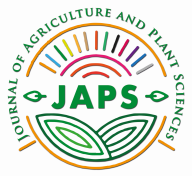CROPWAT – Assessment of Irrigation Strategies in the Region of Skopje
Abstract
CROPWAT is a decision support system developed by the Land andWater Development Division of FAO. Its main functions are to calculatereference evapotranspiration, crop water requirements and crop irrigationrequirements. The program allows choosing the cultivation site, culture, thecropping time, soil type and establishment of irrigation strategy.The ETo, irrigation schedule, the quantity of used water, the reductionof the yield according to the growth stage are calculated from the existing datain CLIMWAT-database. The region of Skopje was chosen for analysis ofdifferent irrigation strategies applied to tomato culture cultivated in an openfield from 15th of May to 3rd of October. Three irrigation strategies wereanalyzed: without irrigation (rainfed), sprinkle irrigation when irrigation covers100% of the field area, drip irrigation with 60% effectively wetted of total fieldarea, irrigation covers 60% of field area, drip irrigation when the deficit isequal to 130% readily available water and definition of own irrigation strategywith drip irrigation system with 60% field coverage and irrigation applicationwhen a specific soil moisture depletion of 22 mm occurs and the applicationdepth is 70% of readily available water.References
Allen R.G., Pereira L.S., Raes D., Smith M., (1998): Crop evapotranspiration – Guidelines for computing crop water requirements – FAO irrigation and drainage paper 56. FAO, Rome.
CLIMWAT (1994): FAO Irrigation and Drainage Paper No. 49. FAO, Rome.
Doorenbos J., Kassam A.H., (1979): Yield response to water. Irrigation and Drainage Paper No. 33. FAO, Rome.
Doorenbos J., Pruitt W. O., (1977): Crop water requirements. Irrigation and Drainage Paper No. 24, (rev.) FAO, Rome.
The intellectual property and copyright on the original content of all scientific contributions in the published paper shall remain with the authors. Authors give permission to the JAPS owner to publish the paper. All authors agree to publish the paper under Attribution-NonCommercial-NoDerivatives 4.0 International license (CC BY-NC-ND 4.0). Once the paper is accepted for publication in JAPS, all authors need to sign the Author/s statement & copyright notice.

